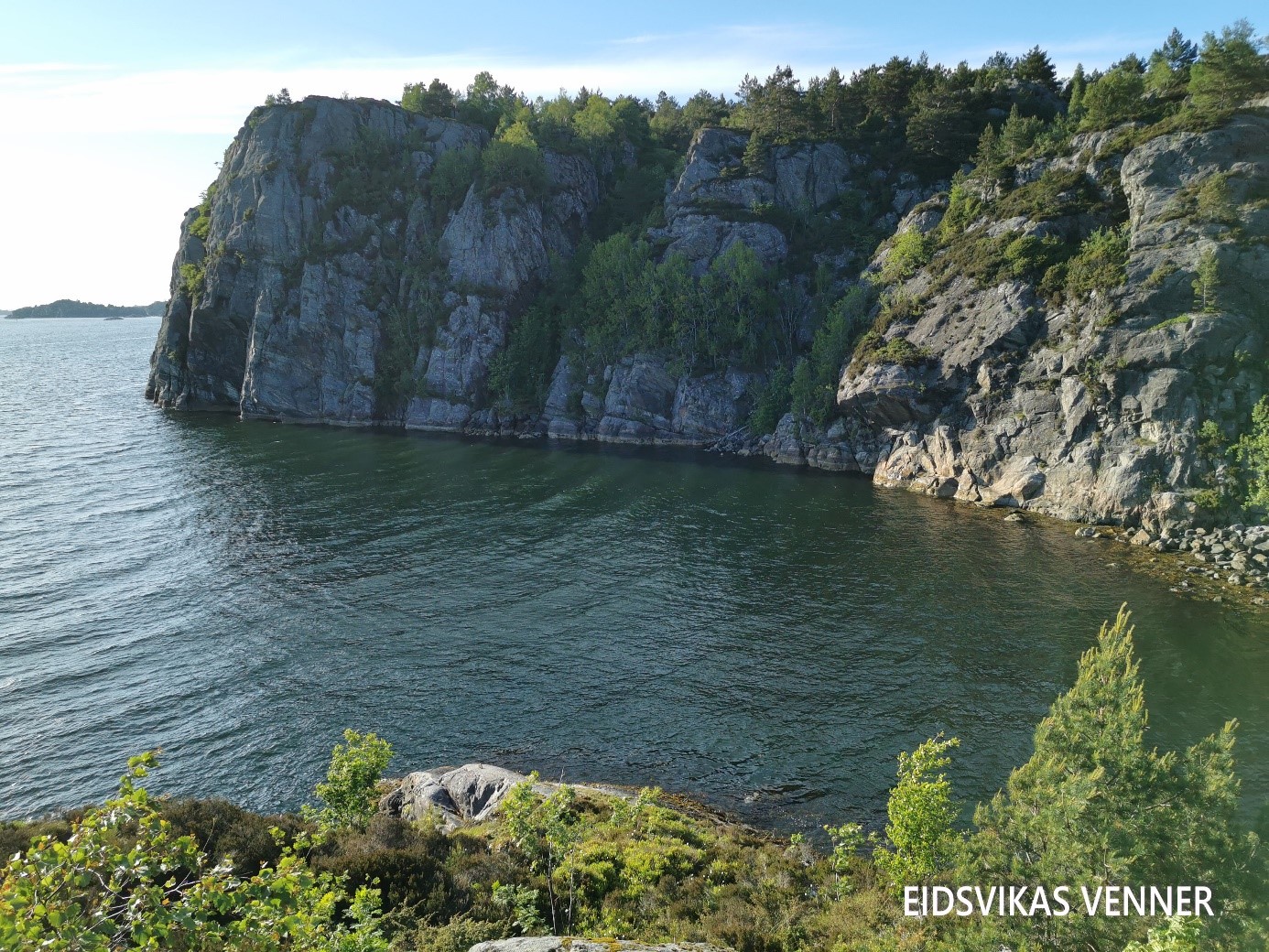The Tysnes rainforest
The unique rainforest in Tysnes is threatened by E39 Hordfast.
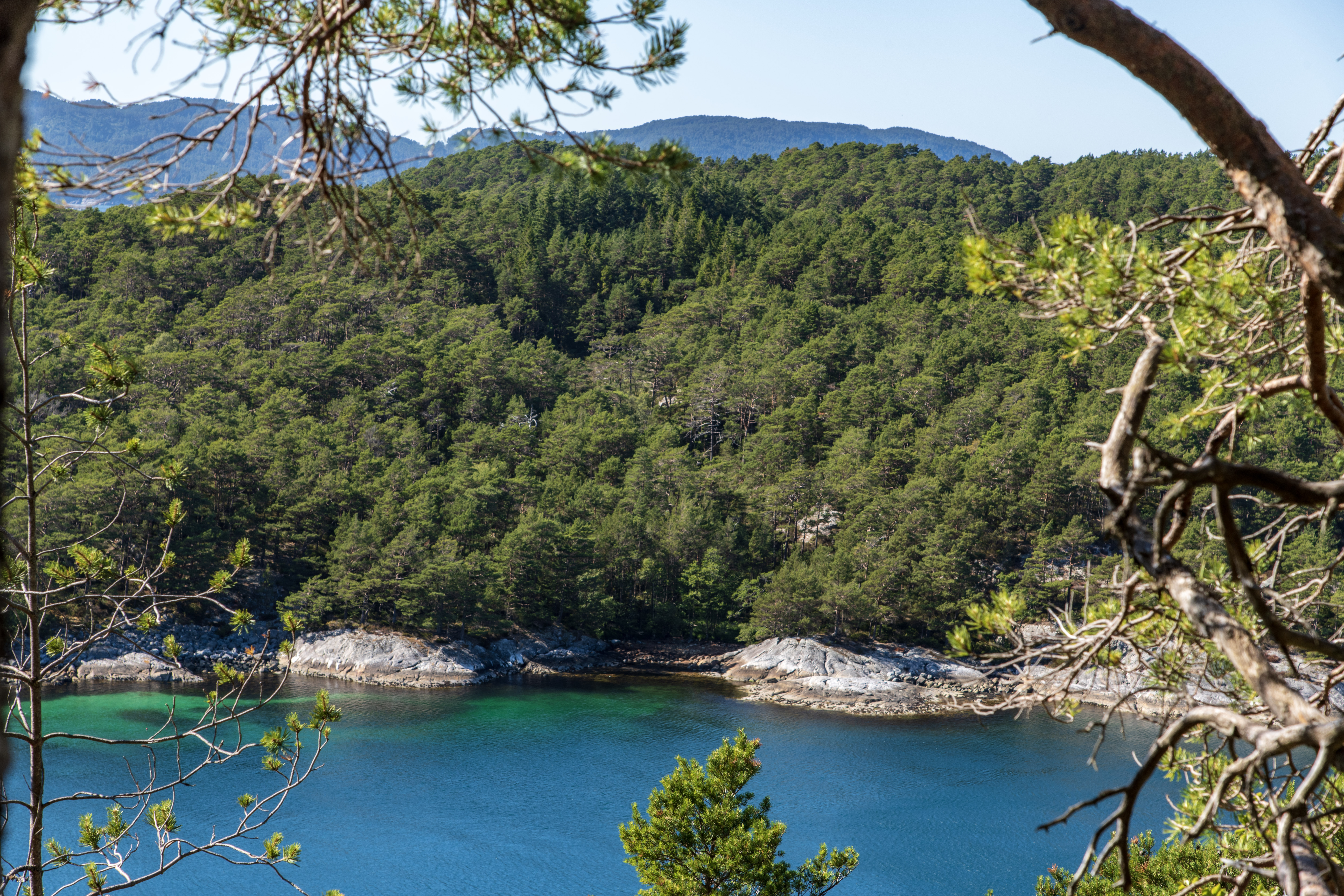
In an earlier article we mention the rainforest and coastal conifer forests in Western Norway. One of the richest occurrences of these is found at Tysnes (including Reksteren) in Sunnhordaland.
Rainforest with rare lichens
Did you know that we have “cold” rainforests in Norway? Well, you probably think that, yes, it rains a lot in Norway, and especially on the Western coast, so surely that whole area is a rainforest? But normal forest in Western Norway isn’t the type of rainforest we’re talking about here. No, these rainforests occur in small areas or pockets of a few acres, and are primarily characterised by a series of rare species of lichen and some mosses.
Here we will talk more about some of these lichens. One thing they have in common with their tropical cousins is that they all need relatively stable temperatures and high humidity all year around, in addition to being extremely sensitive to air pollution. We usually find them in hilly coastal areas dominated by pine, and often in north facing slopes, as in the summer they are more protected against dehydration in the sun there.
Some of the rainforest lichens
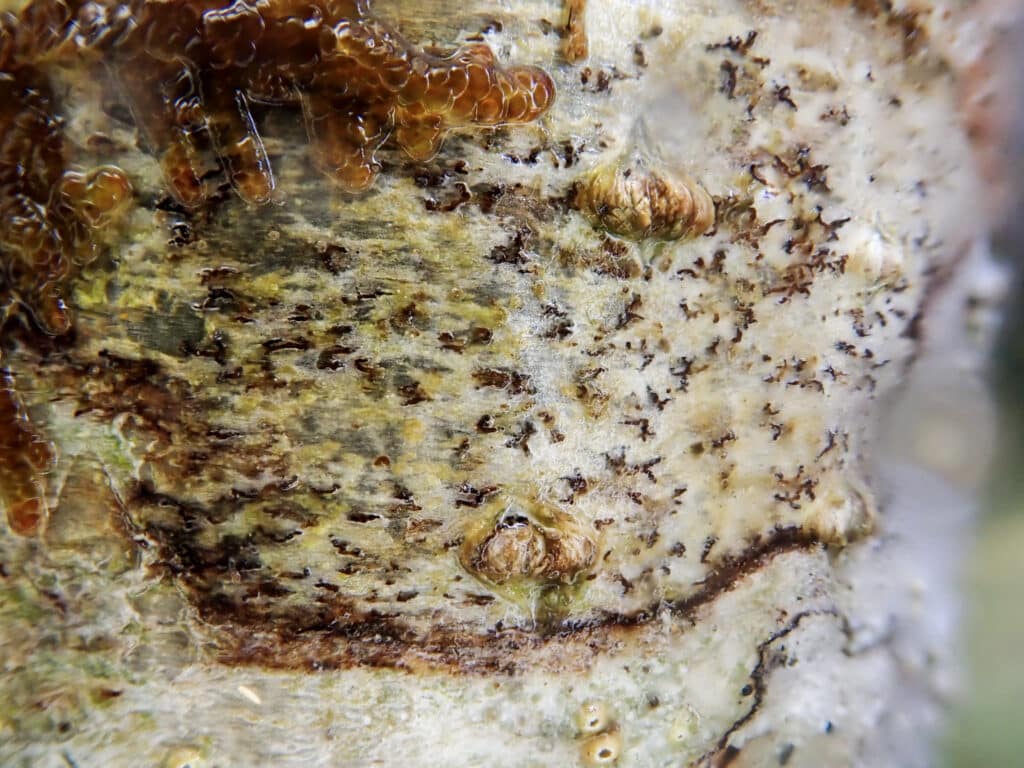 Jan C. Rivenæs
Jan C. RivenæsArthonia stellaris, a vulnerable species on the Norwegian Red List
Bactrospora homalotropa, a critically endangered species
 Jan C. Rivenæs
Jan C. Rivenæs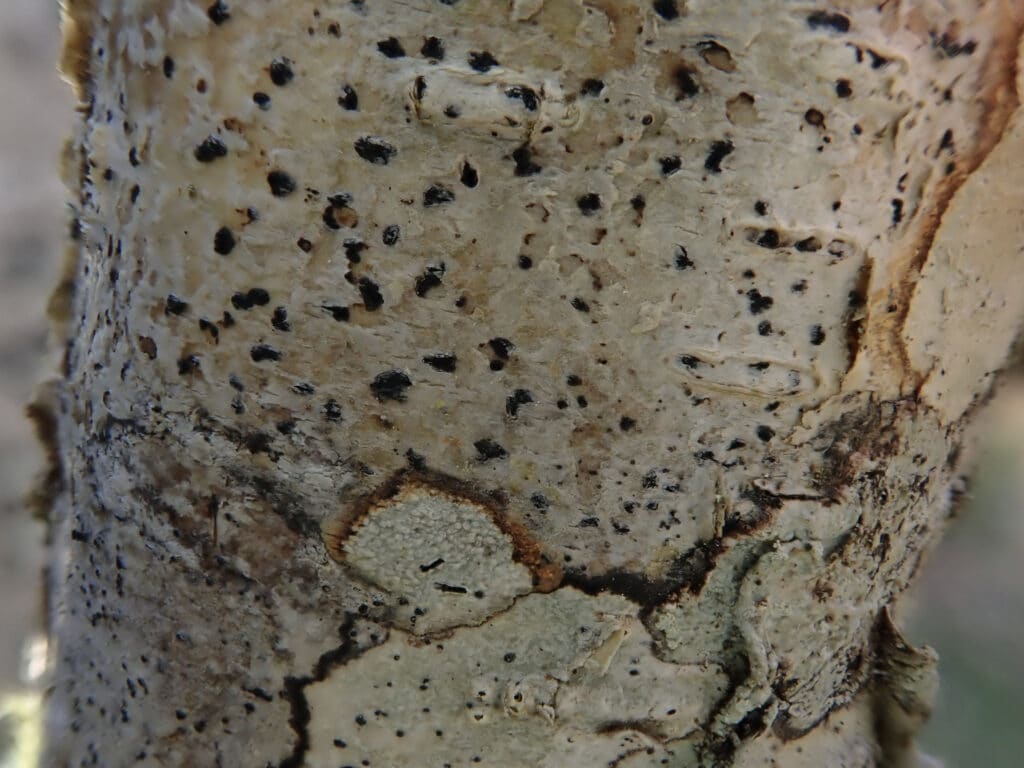 Jan C. Rivenæs
Jan C. RivenæsArthonia ilicina, a vulnerable species
Thelotrema macrosporum, an endangered species
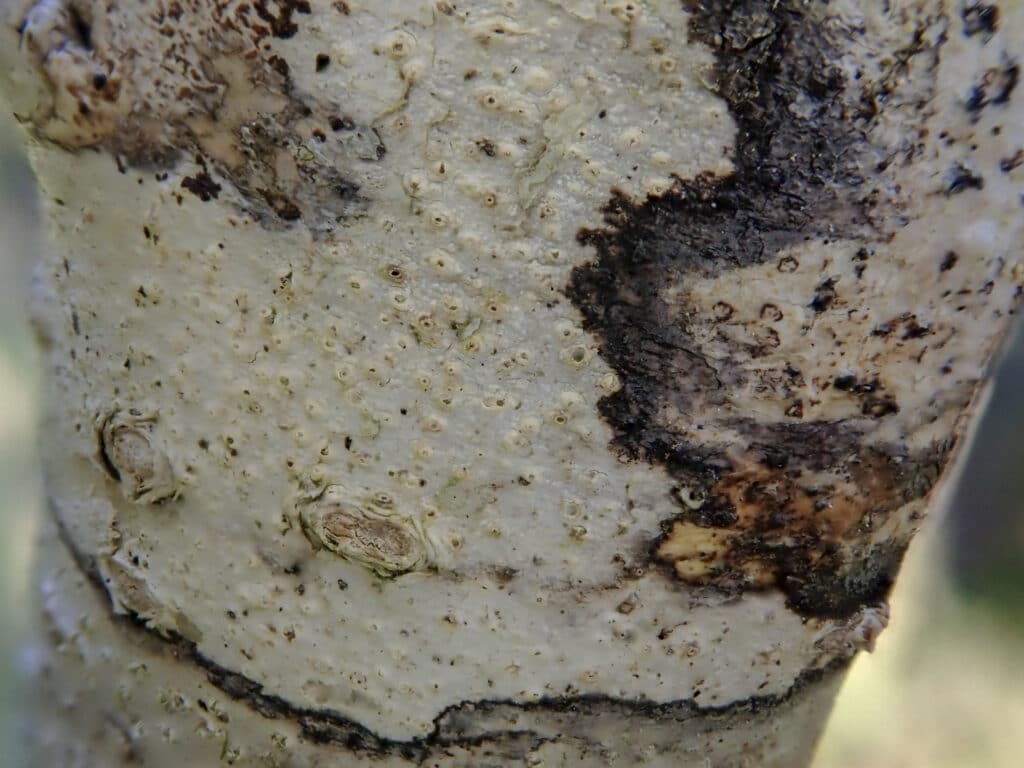 Jan C. Rivenæs
Jan C. Rivenæs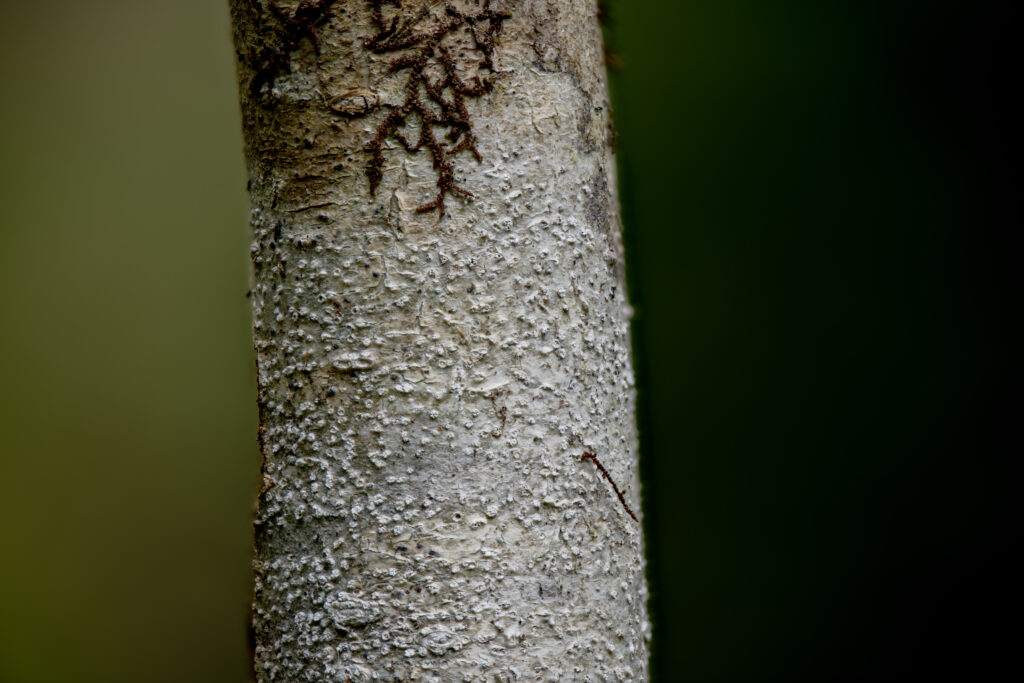 Jan C. Rivenæs
Jan C. RivenæsCrutarndina petractoides, an endangered species
Lepra multipuncta, a vulnerable species directly in the planned path for E39 Hordfast
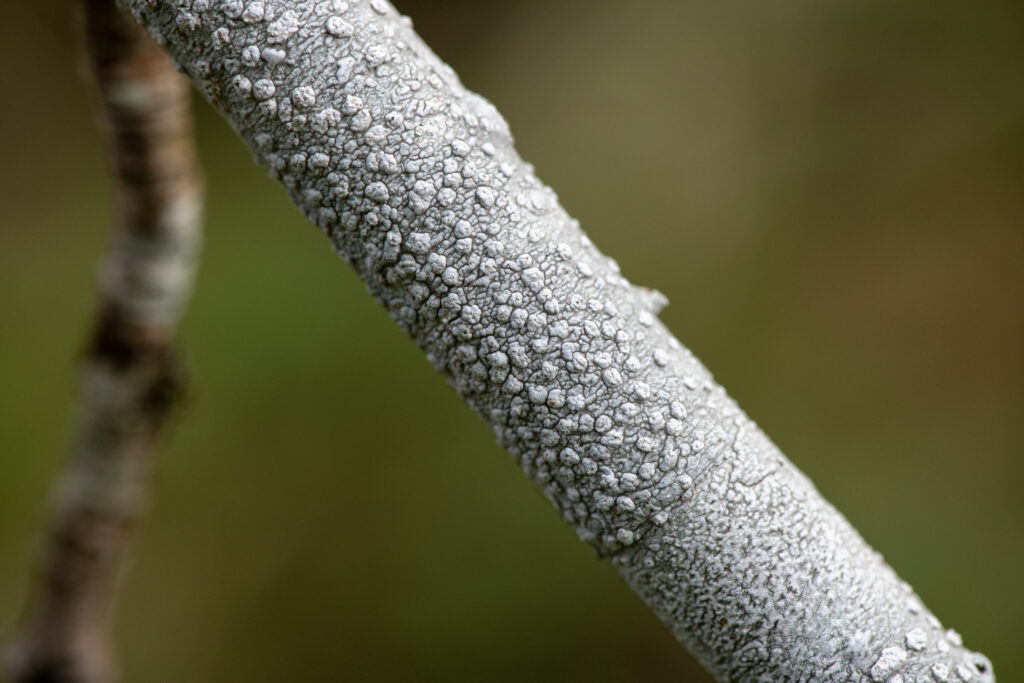 Jan C. Rivenæs
Jan C. RivenæsThese lichens are often described as hyperoceanic, and grow in very few places outside of Western Norway – many of them don’t even have common names in English! – which means that Norway has a special responsibility to preserve both the species and the type of nature. In Western Norway we find them mostly along the coast of Sunnhordaland, close to the sea.
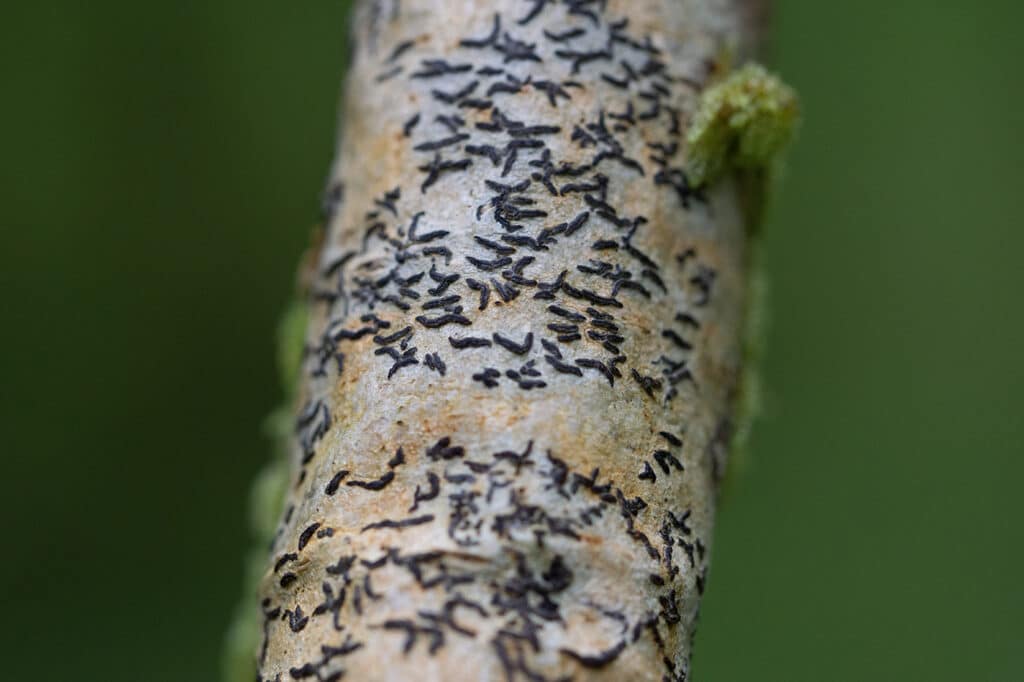 Jan C. Rivenæs
Jan C. RivenæsAn important subtype of these rainforests are dominated by crustose lichen, named for how they grow like a crust over their substrate. Here we find these spots associated with mixed coniferous forests, consisting of pine and deciduous trees with smooth bark, especially hazel and rowan, but also ash, willow, and birch. Because of this the rainforests are called boreonemoral rainforests: a mix of boreal forest dominated by conifers, and nemoral forests with frost-resistant deciduous trees.
In these boreonemoral rainforests rare species often occur together. If you find one of these, such as the easily recognisable Pyrenula occidentalis, there is a high chance of finding others as well. All in all there are about 10 to 20 species used as characteristic species for rainforests. Other than P. occidentalis we have for example Graphis elegans, Thelotrema diminitum, Lepra multipuncta, Arthonia stellaris, Arthonia ilicina, Arthonia elegans, and Crutardina petractoides.
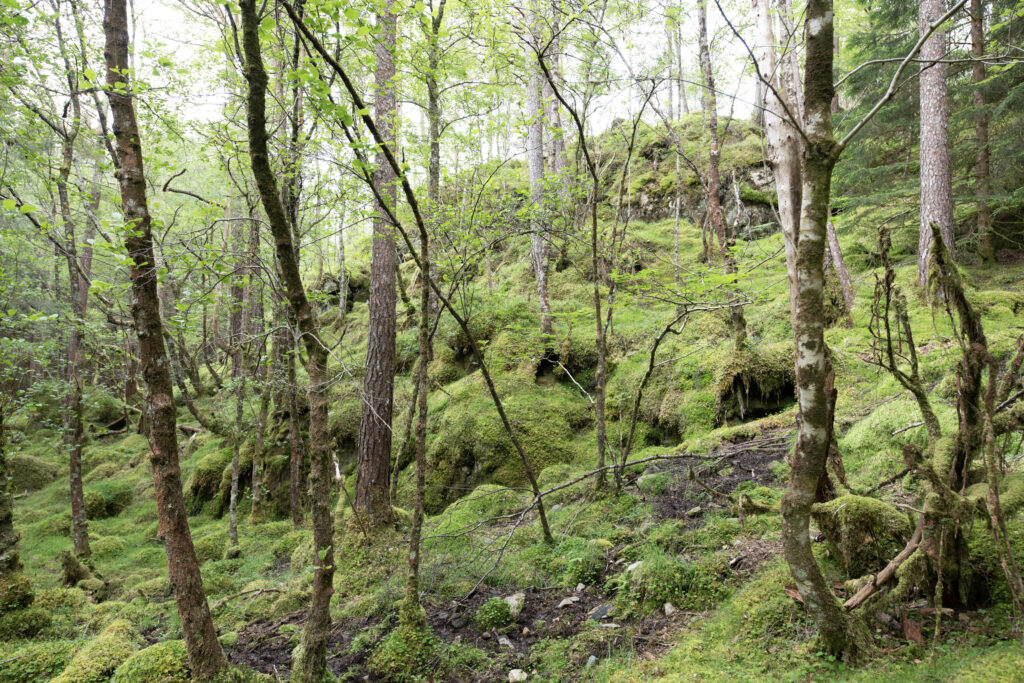 Jan C. Rivenæs
Jan C. RivenæsVulnerable forest
In 2018 a comparison was made between valuable types of nature in the coastal conifer forests in Western Norway. The richest occurrences are found exactly at Tysnes, especially in the area Reksteren to Søreid at Tysnesøy. We also find spots south at Digernes at Stord, and parts of Bømlo. A previous application suggested that this type of nature should be included in the list of prioritised types of nature, but unfortunately the application has not made its way through the bureaucracy.
Boreonemoral rainforests are a vulnerable type of nature, and are included in Norway’s red list. That means that if special measures aren’t taken, there is a high risk of losing this type of nature entirely in Norway.
And yet the road project E39, where Hordfast is included , is mentioned in the red list report. There it says the following: “Boreonemoral rainforest is also vulnerable to construction, especially in connection to road constructions. The plans for the new E39 touch f.ex. Several known occurrences of boreonemoral rainforest.”
Other threats to this type of nature include climate change and invasive species. Increased algae growth on trees is also damaging, as it could lead to reduced amounts of rainforest epiphytes. The algal growth can occur as a result of high amounts of nitrogen.
Text and photo by Jan C. Rivenæs
News in English
Thanks to our volunteers, we have a number of articles in English.

